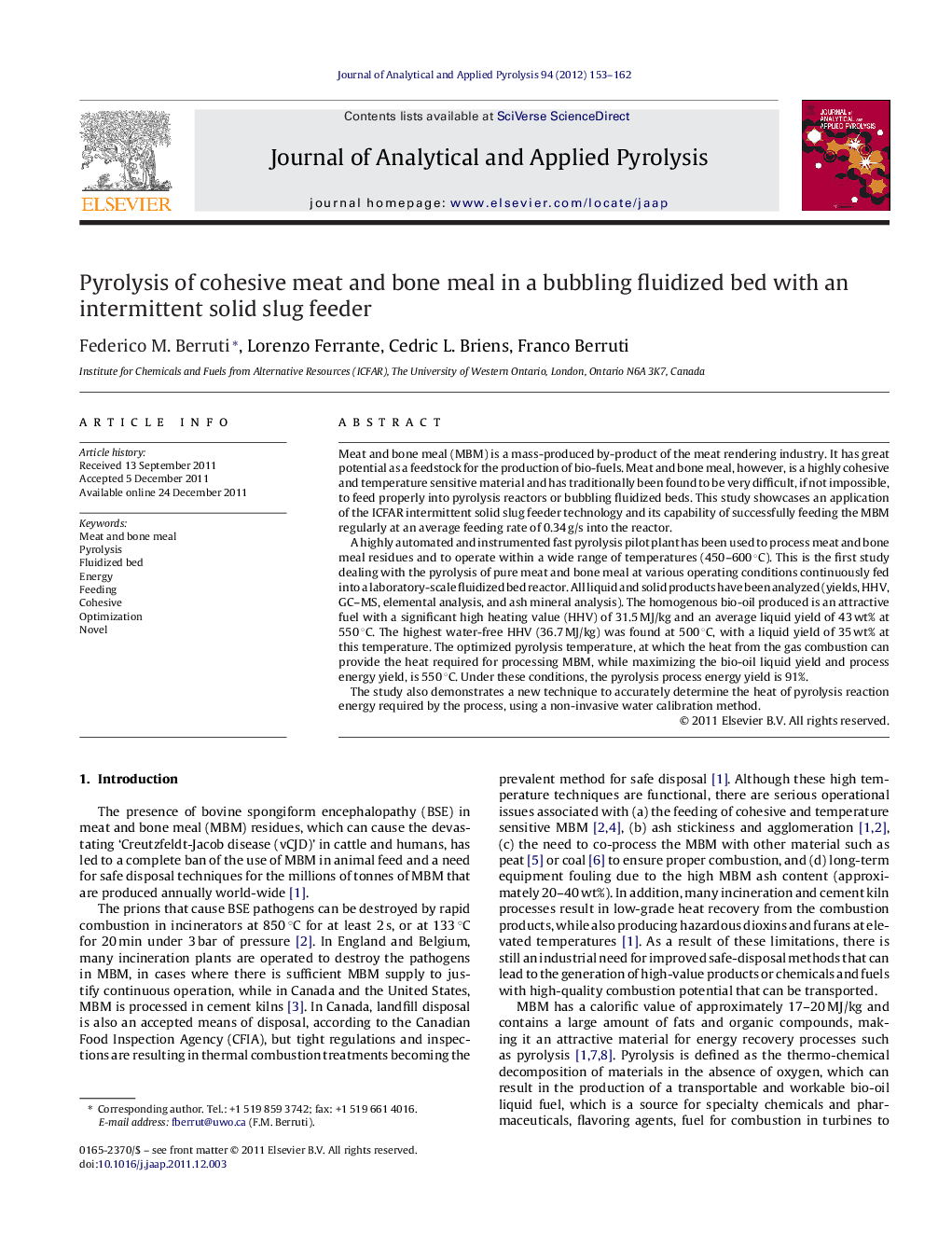| Article ID | Journal | Published Year | Pages | File Type |
|---|---|---|---|---|
| 1197434 | Journal of Analytical and Applied Pyrolysis | 2012 | 10 Pages |
Meat and bone meal (MBM) is a mass-produced by-product of the meat rendering industry. It has great potential as a feedstock for the production of bio-fuels. Meat and bone meal, however, is a highly cohesive and temperature sensitive material and has traditionally been found to be very difficult, if not impossible, to feed properly into pyrolysis reactors or bubbling fluidized beds. This study showcases an application of the ICFAR intermittent solid slug feeder technology and its capability of successfully feeding the MBM regularly at an average feeding rate of 0.34 g/s into the reactor.A highly automated and instrumented fast pyrolysis pilot plant has been used to process meat and bone meal residues and to operate within a wide range of temperatures (450–600 °C). This is the first study dealing with the pyrolysis of pure meat and bone meal at various operating conditions continuously fed into a laboratory-scale fluidized bed reactor. All liquid and solid products have been analyzed (yields, HHV, GC–MS, elemental analysis, and ash mineral analysis). The homogenous bio-oil produced is an attractive fuel with a significant high heating value (HHV) of 31.5 MJ/kg and an average liquid yield of 43 wt% at 550 °C. The highest water-free HHV (36.7 MJ/kg) was found at 500 °C, with a liquid yield of 35 wt% at this temperature. The optimized pyrolysis temperature, at which the heat from the gas combustion can provide the heat required for processing MBM, while maximizing the bio-oil liquid yield and process energy yield, is 550 °C. Under these conditions, the pyrolysis process energy yield is 91%.The study also demonstrates a new technique to accurately determine the heat of pyrolysis reaction energy required by the process, using a non-invasive water calibration method.
► First comprehensive lab-scale study of MBM pyrolysis. ► The ICFAR novel intermittent solid slug feeder technology successfully fed the cohesive MBM at 0.34 g/s. ► The homogenous bio-oil produced is an attractive fuel with an HHV of 31.5 MJ/kg and a liquid yield of 43 wt% at 550 °C. ► The optimized pyrolysis temperature for product yield and quality is 550 °C. ► New technique demonstrated to accurately determine the heat of pyrolysis reaction energy.
